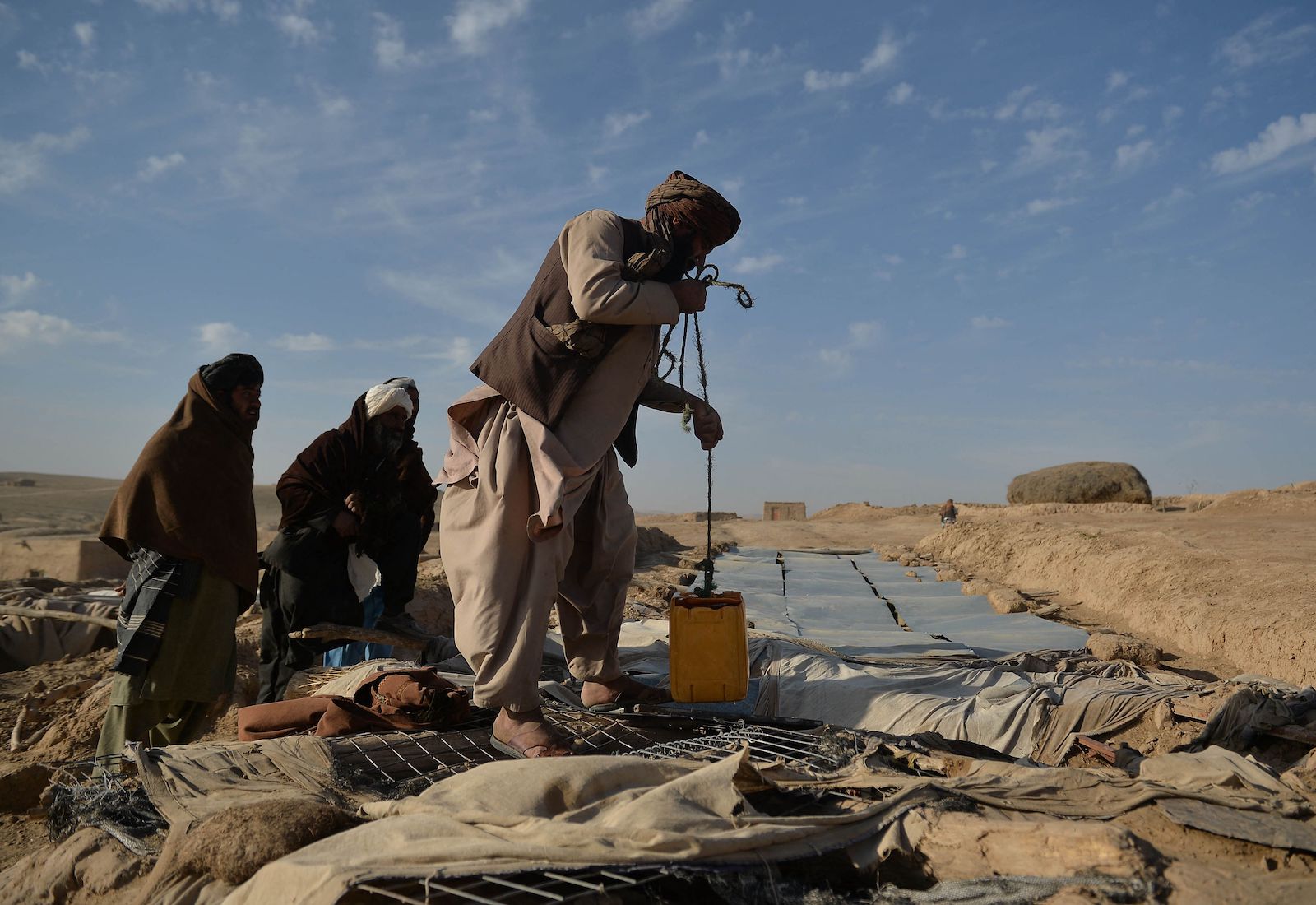A new report calls on rich countries to provide immediate relief.

Joseph Winters
Published May 13, 2022
As the planet warms, compounding crises are pushing poor countries toward a humanitarian catastrophe. Global warming disproportionately threatens the developing world with rising sea levels, more intense storms, and scorching heat waves. At the same time, crippling debt is making it harder for many of these countries to prepare for and recover from these disasters.
A prime example is Eritrea, whose gross public debt is projected to exceed 160 percent of its GDP this year, causing the African Development Bank Group to label the country “in debt distress.” This debt may sap funds away from much-needed measures to adapt to temperature increases above the global average, extreme drought, and famine conditions like those that are currently wreaking havoc on the Horn of Africa.
Without urgent action, experts warn of a “doom loop” of deepening debt and deteriorating environmental conditions. A new report from the Climate and Community Project — a coalition of academics and policy experts working to advance climate justice — urges the United States and European countries to provide immediate relief through a program of “climate reparations,” including through large-scale debt cancellation and restructuring. Even though the least developed countries have only contributed about 8 percent of the planet’s greenhouse gas emissions since 1850, they are poised to bear the brunt of climate change’s devastating impacts.
According to the report, written by Georgetown University philosophy professor Olufemi Táíwò and the Climate and Community Project’s research director, Patrick Bigger, the developing world’s current debt crisis has its roots in colonialism and slavery. These practices funneled labor and resources away from the Global South — countries in Latin America, Asia, Africa, and Oceania — and gave the Global North a head start on economic development that left the rest of the world behind. As a result, Global South countries have had little choice but to borrow money in order to meet basic needs. This money — which may be provided in the form of interest-bearing loans or bonds — comes from governments like the United States, multilateral lenders like the World Bank or the International Monetary Fund, or private lenders, like a wealthy individual or company.
Borrowing money gives poor countries access to funds needed to avert an immediate disaster, such as famine, or to import enough oil to keep homes warm. But in the long term, these arrangements can straddle borrowers with a debt burden that shackles them to their creditors.

The report’s top priority is for wealthy governments and multilateral organizations to cancel poor countries’ publicly held debt — a proposal that Táíwò and Bigger say is relatively simple and politically possible. According to their analysis, 19 of the world’s 20 most climate-vulnerable countries owe most of their debt to public or multilateral lenders that can easily choose to write off debts. Doing so could quickly free up fiscal space for the developing world to invest in climate adaptation and fossil fuel-free development — especially as many countries’ capacity to make those kinds of investments has been strained during the COVID-19 pandemic. In 2020, low- and middle-income countries’ public and private long-term debt swelled 12 percent to a record $860 billion, and some climate-vulnerable countries such as Jamaica and Cabo Verde saw their long-term debt-to-GDP ratio balloon to as much as 96 percent.
There have been efforts from the G20 — an intergovernmental forum of 19 wealthy countries and the European Union — to suspend some of this debt, but the Climate and Community Project report calls them “catastrophically insufficient,” arguing that they have not gone far enough and have sometimes included austerity stipulations — for example, requiring that countries cut public sector wages.
A better policy, Táíwò and Bigger argue, should include the immediate cancellation of all publicly held debt with no strings attached, giving debtor countries the agency to choose how they might allocate their newly available resources.
As a good example, the report points to the Heavily Indebted Poor Countries Initiative, an effort that began in 1996. The International Monetary Fund and a group of wealthy creditor countries eventually wrote off more than $70 billion of debt for 37 countries in the developing world, reducing their required debt repayments by 1.5 percent of GDP between 2001 and 2015. An independent analysis for the World Bank found that the write-offs allowed 28 of the participating countries — including Burkina Faso, Niger, and Ghana — to increase “poverty-reducing expenditures” from 6.4 percent of GDP in 1999 to 8.1 percent in 2004.
According to Bigger, this is a sign that debt cancellation works. “Every dollar spent servicing debt is a dollar not spent on other public policy priorities,” he said.
Canceling publicly held debt wouldn’t solve the entire problem, though, since private lenders hold a large and growing fraction of the developing world’s debt claims. As of 2020, private creditor-owed debt stood at an eye-watering $2.2 trillion, compared to just $792 billion owed to multilateral development banks like the World Bank. Because private lenders are often loath to participate in debt cancellation programs, many privately held debts would need to be acquired by sovereign and multilateral lenders in order to be written off.

Bigger also noted that debt cancellation is less politically visible today than it was in the late 1990s, when a number of high-profile activist campaigns were centered around the Global South’s simmering debt crisis.
Some of today’s largest debt relief programs are spearheaded by big environmental nonprofits and involve conservation stipulations. The Nature Conservancy’s Blue Bonds for Conservation program, for example, helped negotiate a sovereign debt restructuring for Belize in 2020 that reduced the country’s total debt burden by $250 million and allowed it to repay its remaining debt at a lower interest rate — as long as the savings would be used to protect 30 percent of its ocean territory. A similar but larger effort was negotiated in 2016 for the Seychelles.
Lee Buchheit, a lawyer who has represented several countries in sovereign debt restructurings, including Belize, said this model allows countries to contribute to the “global conservation project” despite being in financial straits. While these programs are meant to ensure the savings are put to good use, some say that so-called “debt-for-nature” swaps can undermine a country’s agency to make their own choices about what they need.
“If an organization really takes seriously the idea that environmental decline is interwoven with global inequities … they might not want to put all their efforts in the basket of restructuring and look instead toward reparations,” said Jennifer Silver, an associate professor of geography at the University of Guelph in Ontario, Canada.
In addition to debt cancellation, Táíwò and Bigger call for a rapid increase in climate finance from the Global North. Currently, rich countries have pledged to provide the developing world with $100 billion for climate projects annually, but they really only give about $80 billion. The Climate and Community Project report argues that the number should be closer to $1 trillion a year. It also calls for fines extracted from the fossil fuel industry in courtrooms around the world to be deposited in a trust fund that can be used by vulnerable communities in the Global South.
According to Bigger, these actions should be viewed not only as an opportunity for rich countries to redress previous harms, but to ensure that the developing world can pursue low-carbon and climate-resilient development, girding itself for a climate crisis it had little role in causing. “We need to think about the ramifications of how we decarbonize and what we owe to the rest of the world,” he said.







